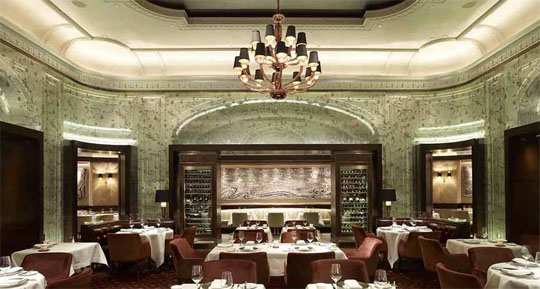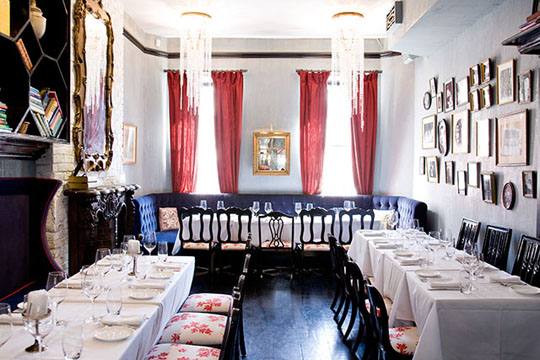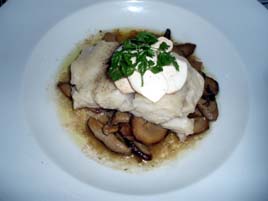Adour
 Sunday, February 10, 2008 at 01:44PM
Sunday, February 10, 2008 at 01:44PM Note: Adour closed in November 2012. A succession of executive chefs was not able to reclaim a lost Michelin star, or apparently, lost business.
*
My girlfriend and I thought it was near tragic when Alain Ducasse at the Essex House closed. It was the site of perhaps the best meal we have had in New York. When Ducasse announced that he was moving to the St. Regis, site of the former four-star Lespinasse, in a new restaurant called Adour, we hoped the magic would be moving with him.
Alas, the magic is nowhere to be found. Adour is a bore. A really crashing bore.
I don’t think three-star food has to be innovative: I find real pleasure in classics done well. But the menu here is downright soporific: one yawn after another. There’s no excitement on the plate at all. And if no longer priced in the stratosphere, as it was at the Essex House, the food at Adour is still very expensive. For entrées priced in the $40s, one expects at least some indication of the creative spark that earned Ducasse all of those Michelin stars.
The menu is printed on stiff boards glued into an upholstered cardboard folder. It is obviously not easily changeable. It makes Adour feel like a crass hotel restaurant. The subtle message it sends is: “The food isn’t changing anytime soon.” It is almost all in English. It apparently hasn’t occurred to Monsieur Ducasse that patrons at his restaurant might want, you know, French food.
Is this Ducasse’s way of saying “Screw you, New York”? Or, in his eagerness to pander—to give Americans what he thinks we want—has he forgotten to give us what he’s actually good at? We asked one of the servers what had happened to the great menu served at the Essex House. “It was time to move on,” he said.
To “move on” to this?
We certainly expected dialed-down luxury, given a price point about 50% lower than the Essex House. But there isn’t even an amuse-bouche here. If you order a cheese course ($22), there’s no cart, just a plate of four cheeses deposited on your table.
The wine service shines, though. The menu, after all, is supposedly designed to go well with wine, though I am not sure what that means. The list has plenty of compelling choices at decent prices, including multiple bottles of red under $50. We selected a 1996 Bricco Boschi Barolo at $105, which the staff decanted for us. I also liked the bread service, which came with a wonderful soft olive butter.
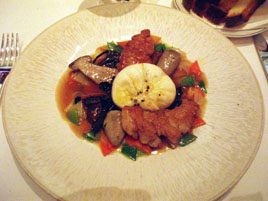
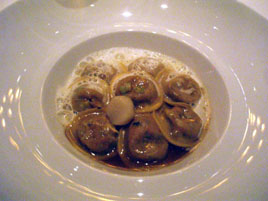
Sweetbread “Meunière”, Egg Purse (left); Foie Gras Tapioca Ravioli (right)
Sweetbreads with wild mushrooms ($24) were simply grilled, but I appreciated the egg purse in the center of the plate, which made a rich, runny mess. My girlfriend’s Foie Gras Tapioca Ravioli ($23) were dull. The taste of foie can always be counted on for luxury by default, but the dish made no attempt to offer any contrast.
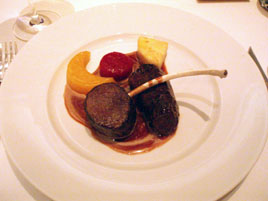

Venison Medallions (left); Roasted Colorado Rack of Lamb (right)
Both Venison ($42) and Rack of Lamb ($48) were left basically to fend for themselves, with token vegetables offering little to amuse the palate. My girlfriend said that the side of risotto that came with her lamb was more interesting than the lamb itself.
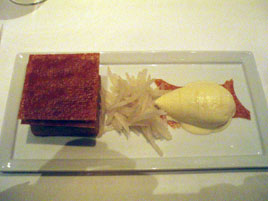
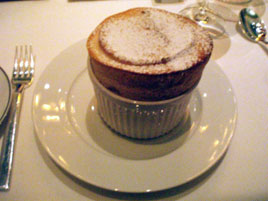
Pear Clafoutis (left); Gala Apple Soufflé (right)
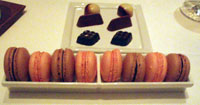 Neither dessert captured our imagination either, though at $14 apiece we didn’t feel cheated. The plates of petits-fours were generous, though we were full and didn’t touch them.
Neither dessert captured our imagination either, though at $14 apiece we didn’t feel cheated. The plates of petits-fours were generous, though we were full and didn’t touch them.
At Adour, the service team is no longer all French, as they were at the Essex House. Most of them seem capable, though we observed some minor snafus that no doubt will be worked out as the restaurant gets its legs. When we arrived, we appreciated that we were given ample time to peruse the wine list and enjoy our champagne. The restaurant wasn’t full, and the table appeared to be ours for as long as we wanted it.
The David Rockwell-designed space is comfortable and gorgeous. It could easily be one of the city’s most serene spots to enjoy a meal. But the food doesn’t live up to it. We can only hope Ducasse will take this milquetoast menu back into his laboratory, and return with some real excitement.
Adour (2 E. 55th Street at Fifth Avenue in the St. Regis Hotel, East Midtown)
Food: *½
Service: ***
Ambiance: ***
Overall: **


